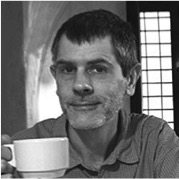The LOD-LAM (Libraries, Archives and Museums) community is at a critical point for major adoption of semantic technologies. They have significant structured data repositories, active curation of information, an increasingly digital focus, and a strong public commitment to sharing what they know. There is a growing "Cultural Ecosystem" with foundations in linked data.
Designing applications for LOD-LAM provides insights and examples we can learn from, when creating rich, relevant, usable applications for heterogeneous linked data. Much of that work can be applied to other domains to extend linked data tools and capabilities. This talk describes how we approach our projects and shows useful application design techniques.
Rich, relevant design requires an intimate understanding of information and the way people interact with it. Incorporating LOD-LAM means taking the long view — understanding that the integrity and persistence of the information matters. This is increasingly important as we move toward more born-digital cultural information and shared curation.
This talk covers:
- A framework for thinking about flexible data and applications within an organization, as well as how to manage the implications of information shared among multiple organizations.
- Application design considerations that leverage the potential of heterogeneous linked data and work to blend that data into a successful user experience.
- Challenges that organizations face in adoption, planning, and designing for multiple platforms and different use cases.


